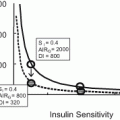Generic name and year of approval
Trade name(s)
Dosage
DEA schedule
Pancreatic lipase inhibitor approved by FDA for long-term use
Orlistat
Xenical
120 mg three times daily before meals
Not scheduled
Serotinin-2C receptor agonist approved by FDA for long-term use
Lorcaserin
Belviq
10 mg twice daily
IV
Combination of phentermine–topiramate approved by FDA for long-term use
Phentermine–topiramate ER
Qsymia
3.75/23 mg
7.5/46 mg
11.25/69 mg
15/92 mg
IV, because of phentermine component
Combination naltrexone–bupropion approved by FDA for long-term use
Naltrexone–bupropion SR
Contrave
8/90 mg tablets: 2 in morning and 2 in evening with carbohydrate meal
Not scheduled
Noradrenergic drugs approved for short-term use
Diethylpropion
Tenuate
Tenuate dospan
25 mg three times daily
75 mg every morning
IV
Phentermine
Adipex and many others
15–30 mg/day
IV
Benzphetamine
Didrex
25–50 mg three times daily
III
Phendimetrazine
Bontril
Prelu-2
17.5–70 mg three times daily
105 mg daily
III
Liraglutide 3 mg, under consideration at FDA for long-term use
Liraglutide 3 mg
Saxenda
3.0 mg by injection
Pending
Orlistat (Marketed as Xenical in the USA)
Orlistat (tetrahydrolipstatin) is approved by the US FDA for long-term management of obesity. Orlistat is a potent and selective inhibitor of pancreatic lipase that reduces intestinal digestion of fat. It is available as a prescription drug (120 mg tid (three times a day) before meals). A number of long-term clinical trials with orlistat have been published using patients with uncomplicated obesity and patients with obesity and diabetes [8]. A 4-year double-blind, randomized, placebo-controlled trial with orlistat in 3304 overweight patients, 21 % of whom had impaired glucose tolerance [9], achieved a weight loss during the first year of more than 11 % below baseline in the orlistat-treated group compared to 6 % below baseline in the placebo-treated group. Over the remaining 3 years of the trial, there was a small regain in weight, with the orlistat-treated patients remaining 6.9 % below baseline, compared with 4.1 % for those receiving placebo. There was a reduction of 37 % in the conversion of patients from impaired glucose tolerance to diabetes.
Use of orlistat has also been studied in children; 539 adolescents received 120 mg three times per day compared to placebo [10]. BMI decreased by 0.55 kg/m2 in the drug-treated group compared to an increase of + 0.31 kg/m2 in the placebo group [10]. In a meta-analysis of trials with orlistat, the weighted mean weight loss in the placebo group was − 2.40 ± 6.99 kg and the weight loss in those treated with orlistat was − 5.70 ± 7.28 kg for a net effect of − 2.87 (95 % CI − 3.21 to − 2.53) [11].
Safety Profile of Orlistat
Orlistat is not absorbed to any significant degree, and its side effects are thus related to the blockade of triglyceride digestion in the intestine [12]. Fecal fat loss and related gastrointestinal (GI) symptoms are common initially, but they subside as patients learn to use the drug. Orlistat can cause small but significant decrease in fat-soluble vitamins. Levels usually remain within the normal range, but a few patients may need vitamin supplementation. Because it is clinically challenging to tell which patients need vitamins, it is thus wise to provide a multivitamin routinely with instructions to take it before bedtime. Orlistat does not seem to affect the absorption of other drugs, except acyclovir. Rare cases of severe liver injury have been reported with the use of orlistat; at a time when an estimated 40 million people took orlistat, only one case of severe liver injury occurred in the USA, and 13 elsewhere. A causal relationship has not been established, but patients who take orlistat should contact their health-care provider if itching, jaundice, pale color stools, or anorexia develop [5].
Lorcaserin, (Marketed as BELVIQ ® in the USA)
Lorcaserin Belviq®, Arena Pharmaceuticals and Esai Pharmaceuticals) is approved by the US FDA for a long-term weight management . Serotonergic drugs have been used in the past to treat obesity (fenfluramine and dexfenfluramine), but were removed from the market because of damage to the heart valves [13]. Lorcaserin selectively targets the serotonin 2c receptor, which when activated in the hypothalamus reduces food intake, [14]and avoids the serotonin 2b heart valve target. Lorcaserin is prescribed at 10 mg twice daily (Belviq prescribing information).
Efficacy of Lorcaserin
Three clinical studies provided evidence [15] for approval of lorcaserin . Two of these studies called Behavioral Modification and Lorcaserin for Overweight and Obesity Management (BLOOM) [16] and Behavioral Modification and Lorcaserin Second Study for Obesity (BLOSSOM) [17] enrolled volunteers who were obese or had BMI > 27 kg/m2 with one comorbidity. The third study called BLOOM diabetes mellitus (DM) [18] enrolled diabetic patients with hemoglobin A1C of 7–10 % and a BMI of 27–45 kg/m2. In this study, all patients (including the placebo group) received counseling in diet and physical activity. There was modest weight loss (5 %) with lorcaserin at 1 year. There were improvements in cardiovascular risk factors particularly when the patient population had abnormal risk factors at baseline. In the BLOOM-DM study, HbA1c decreased 0.9 ± 0.06 with lorcaserin BID, compared to 0.4 ± 0.06 with placebo (P < 0.001) and fasting glucose decreased 27.4 ± 2.5 mg/dL compared to a decrease of 11.9 ± 2.5 mg/dL for placebo (P < 0.001) [18]. Weight maintenance was demonstrated in the BLOOM-DM study with a small amount of regain in the second year .
Safety Profile of Lorcaserin
Lorcaserin was scrutinized for potential effects on heart valves during phase III studies where echocardiograms were done on more than 5200 subjects. There was no statistically significant increase in FDA-defined valvulopathy with drug treatment as compared to placebo. In the FDA briefing report [15], using combined data on all patients who were exposed to lorcaserin or to placebo in the three studies, the relative risk of FDA-defined valvulopathy in lorcaserin-treated participants, as compared with those who received placebo, was reported as 1.16 (95 % CI, 0.81–1.67) which is not statistically significant. However, since lorcaserin has much greater selectivity for the 5-HT2c receptor than the 5-HT2b receptor, it is very unlikely that lorcaserin will increase the risk of valvulopathy in humans and the FDA has not recommended routine echocardiography for prescription of lorcaserin
Another issue with lorcaserin was found in preclinical toxicology studies, where an increased numbers of brain and mammary tumors were reported in rats. These were reanalyzed and there were fewer malignant tumors than first thought [15]. Additionally, the drug does not have high levels in the central nervous system of humans, whereas it does in rats [15] .
Lorcaserin is well tolerated. The most common adverse events in clinical trials were headache, nausea, dizziness, fatigue, dry mouth, and constipation (Belviq prescribing information). These were mild and resolved quickly. However, a primary concern is that the drug should not be used with selective serotonin reuptake inhibitors (SSRIs) or with monoamine oxidase inhibitors (MAOIs), because of the risk of serotonin syndrome.
In summary, the remarkable aspect of lorcaserin seems to be in its safety and tolerability not in the magnitude of its weight loss [34]. The only issue is the risk of serotonin syndrome and because the background use of SSRI antidepressants in overweight and obese patients is so high, physicians should be watchful and not prescribe lorcaserin in patients taking SSRIs.
Phentermine/Topiramate ER (Marketed as QSYMIA™ in the USA)
The combination PHEN/TPM ER is marketed as Qsymia™ by Vivus Inc. and is the first new drug combination approved for chronic weight management in overweight and obese persons in more than a decade. The combination uses lower doses of phentermine (3.75 mg in the starting dose, 7.5 mg in the recommended dose, and 15 mg in the top dose) than are usually prescribed when phentermine is used as a single agent. The topiramate is an extended release (ER) formulation, not available other than in this combination and the dose of topiramate in the combination is 23 mg in the starting dose, 46 mg in the recommended dose, and 92 mg in the top dose and is also lower than when topiramate is used for migraine prophylaxis or to control seizures. In terms of mechanism of action, phentermine acts to reduce appetite through increasing norepinephrine in the hypothalamus and topiramate’s appetite-reducing mechanism is not thoroughly understood, although it may be through its effect on γ-aminobutyric acid (GABA) receptors.
Efficacy of PHEN/TPM ER
Two clinical studies [19, 20] provided efficacy and safety data that formed the basis [21] for approval of the medication. The first called EQUIP [19] enrolled subjects < 70 years of age with BMI > 35kg/m2 who had one of the following: blood pressure to be controlled (< 140/90 mmHg using 0–2 antihypertensive medications), fasting blood glucose < 110 mg/dL, and triglycerides < 200 mg/dL using 0 or 1 lipid-lowering medication. The other study called CONQUER [20]enrolled adults < 70 years of age with BMI > 27 and < 45 kg/m2, but for patients with type 2 diabetes, no lower BMI limit was required. The CONQUER study also required patients to have two or more of the following comorbidities: hypertension, hypertriglyceridemia, dysglycemia (impaired fasting glucose, impaired glucose tolerance or type 2 diabetes), or an elevated waist circumference (> 40 inches for men or > 35 inches for women). Thus, the patient population in these two studies represents those with higher risk profiles from the consequences of excess weight. A titration period of 2 weeks is recommended for PHEN/TPM ER, starting at 3.75/23 mg dosage, although in these studies it was shorter. All subjects in these studies received a lifestyle modification program based on the LEARN manual [22, 23]. This combination medication has produced the largest weight losses observed in clinical trials of obesity medications approaching 10 % on average.
The CONQUER study was extended for a second year of observation with patients keeping their treatment assignment; this was called the SEQUEL study [2] At the end of the second year of treatment, patients completing the trial taking the recommended dose (7.5/46 mg) maintained a weight loss of 9.3 % below baseline and those on the top dose maintained a 10.7 % weight loss from baseline.
The weight loss with PHEN/TPM ER is accompanied by improvements in most risk factors. In the CONQUER study [20], there were clinically and statistically significant improvements in blood pressure, glycemic measures, high-density lipoprotein (HDL) cholesterol, and triglycerides with both the recommended and the top doses of the medication. In the EQUIP, CONQUER, and SEQUEL studies, improvements in risk factors were related to the amount of weight loss, with greater benefit being observed with greater weight loss. Further, a population with abnormal risk factors is more likely to demonstrate improvement in those risk factors. PHEN/TPM ER has also been studied in patients with sleep apnea and has shown to reduce the severity of symptoms from sleep apnea [24].
Safety Profile of PHEN/TPM ER
The most commonly observed side effects in the clinical trials were paresthesia, dizziness, dysgeusia (altered taste particularly with carbonated beverages), insomnia, constipation, and dry mouth (Qsymia prescribing information). These side effects are related to the constituents of PHEN/TPM ER or, in the case of constipation, to weight loss per se. Phentermine , as a sympathomimetic agent, causes insomnia and dry mouth, usually early in treatment, which then resolve. Topiramate is a carbonic anhydrase inhibitor that is associated with altered taste for carbonated beverages and tingling in fingers, toes, and perioral areas and may lead to mild metabolic acidosis.
Safety concerns(Qsymia™ prescribing information) with PHEN/TPM ER are also associated with the two components. Weight loss is contraindicated in pregnancy, as are all weight loss medications. Topiramate is associated with oral clefts if used during pregnancy and PHEN/TPM ER is pregnancy category X. A rare side effect of topiramate is acute glaucoma and the drug is contraindicated in glaucoma. PHEN/TPM ER is also contraindicated in hyperthyroidism and within 14 days of treatment with MAOIs and in patients with hypersensitivity to any of the ingredients in the medication. Because of the risk of oral clefts, a negative pregnancy test before treatment and monthly thereafter and use of effective contraception are required. If a patient becomes pregnant while taking PHEN/TPM ER, treatment should be immediately terminated. Other potential issues, though rare, includes risk of kidney stones (associated with topiramate) mild metabolic acidosis (associated with topiramate) and increased heart rate in patients susceptible to sympathomimetic drugs (associated with phentermine).
Naltrexone/Bupropion (NB) Combination in Sustained Release Formulation (Marketed as Contrave in the USA)
Bupropion (± 1-(3-chlorophenyl)-2-[(1,1-dimethylethyl)amino)-1-propanone) reduces food intake by acting on adrenergic and dopaminergic receptors in the hypothalamus. Naltrexone (17-(cyclopropylmethyl)-4,5-alpha-epoxy-3,14-dihydroxy-morphinan-6-1) is an opioid receptor antagonist with minimal effect on weight loss on its own. The rationale for combining bupropion with naltrexone is that naltrexone might block inhibitory influences of opioid receptors activated by the β-endorphin which is released in the hypothalamus and stimulates feeding, while allowing α-melanocyte stimulating hormone (α-MSH) which reduces food intake to inhibit food intake [25]. The combination was favorably reviewed by an FDA advisory panel in 2012 [26]. However, because bupropion increases pulse and both bupropion and naltrexone increase blood pressure and in the phase III studies, the FDA has required a premarketing study of the combination drug with assessment of cardiovascular outcomes. An interim analysis of the trial was favorable and the drug is now marketed.
Efficacy of NB SR
Weight loss with the NB combination at 1 year was intermediate to that of PHEN/TPM ER and lorcaserin. This produced improvement in risk factors. However, the effect on blood pressure is not as great as one would expect with this degree of weight loss in the two studies that comprised the phase III trials of NB, called the Contrave Obesity Research (COR) [27] and COR and Behaviour Modification (COR BMOD) trials [28].
What is of concern is the outlier effect of NB, not the mean blood pressure effect, which is reduced, albeit not as much as expected. This has implications for patients with hypertension, as we discuss later. In the COR BMOD trial (http://www.accessdata.fda.gov/scripts/cder/drugsatfda/http://www.accessdata.fda.gov/scripts/cder/drugsatfda/), the authors describe a post hoc subgroup analysis of 50 individuals who had systolic blood pressure > 130 mmHg at baseline. For individuals who received NB 32/360 + BMOD, mean systolic blood pressure declined at all visits with mean reductions 3.4–11.4 mm Hg. In this same set of subjects, mean diastolic blood pressure also declined by 1.0–6.5 mm Hg. This would seem to indicate that there was no increased risk for those with higher blood pressure who take the drug. However, in the COR I trial [27], there were transient increases in mean blood pressure of 1.5 mm Hg systolic, while the placebo-treated group had transient decreases of 1.5 mm Hg. The amount of weight loss may modify the blood pressure response. In the COR BMOD trial [28], the authors report that changes in blood pressure in the NB 32/360 + BMOD group were correlated with weight loss.
Safety Profile of NB SR
The label (http://www.accessdata.fda.gov/scripts/cder/drugsatfda/http://www.accessdata.fda.gov/scripts/cder/drugsatfda/) for this medication recommends following blood pressure in the first few weeks of prescribing. Of course, over time, weight loss will have a beneficial effect on blood pressure. Other safety issues relate to the individual components. Like all medications for depression in the USA, a black box warning cautions about increased risk of suicidal thinking, especially in young individuals. This has carried over to the indication for weight loss, although there was no signal of suicidality in the clinical trials with the combination. Bupropion lowers the seizure threshold and the combination is contraindicated in those with history of seizures. Naltrexone is an opioid antagonist and should not be given with opiates or opiate inducers because it will negate their effects. There are some tolerability issues, chiefly nausea on initiating the drug [27],and potential issues with SSRIs or MAOIs [27]. However, a dose escalation over 3 weeks is recommended to minimize nausea and vomiting. But the medication could offer another option for physicians prescribing to aid patients in behavioral attempts at weight loss.
Liraglutide 3 mg (Marketed as Saxenda in the USA) Under Consideration for FDA Approval, Tentatively Named Saxenda
Liraglutide is a glucagon-like peptide (GLP)-1 agonist that has a 97 % homology to GLP-1. This molecular change extends the circulating half-life from 1–2 min to 13 h. Liraglutide is approved in doses up to 1.8 mg for the treatment of type 2 diabetes. This molecule, like other GLP-1 agonists has a multiplicity of actions besides effects on the pancreas to promote glycemic control [29]. One such effect is reduction in food intake [30].
Efficacy of Liraglutide 3 mg
In a 20-week multicenter European clinical trial, Astrup et al. [31] reported that daily injections of liraglutide at 1.2, 1.8, 2.4, or 3.0 mg produced weight losses of 4.8, 5.5, 6.3, and 7.2 kg, respectively, compared to a loss of 2.8 kg in the placebo-treated group and 4.1 kg in the orlistat-treated comparator group. In the group treated with 3.0 mg/day, 76 % achieved a > 5 % weight loss compared to 30 % in the placebo group. Blood pressure was significantly reduced, but there were no changes in lipids. The prevalence of prediabetes was reduced by liraglutide.
Liraglutide 3 mg was studied following a highly structured diet where patients who achieved 5 % or more weight loss over 4–12 weeks (77 % of enrollees achieved this benchmark) were randomized to liraglutide 3.0 mg or placebo. Mean percentage weight loss (± standard deviation) in the run-in was − 6.0 % (± 0.9). At 56 weeks, subjects in the liraglutide group lost an additional − 6.2 % (± 7.3) compared with − 0.2 % (± 7.0) in the placebo group. This reflects a mean − 12.2 % reduction from initial baseline body weight for those in the liraglutide treatment [32].
Safety Profile of Liraglutide 3 mg
Liraglutide will carry many of the safety and tolerability warnings that are known from the 1.8 mg dose, including increased risk for pancreatitis and a warning about potential for thyroid C cell tumors. The tolerability issues are the same as with the drug when used at a lower dose for type 2 diabetes. Nausea and vomiting mandate a dose escalation over 5 weeks. Of course, liraglutide must be given by injection and it is unknown how this will affect the use in obese patients. Liraglutide is an important addition to the obesity therapeutic toolbox, when made available. It marks the first time our understanding of the biology of food intake regulation has yielded a biological therapy.
Drugs Approved by the US FDA for Short-Term Use in Treating the Patient with Obesity
The sympathomimetic drugs, benzphetamine, diethylpropion, phendimetrazine, and phentermine are grouped together because they act like norepinephrine and were tested before 1975. Phentermine and diethylpropion are classified by the US Drug Enforcement Agency as schedule intravenous (IV) drugs; benzphetamine and phendimetrazine are schedule III drugs. This regulatory classification indicates the government’s belief that these drugs have the potential for abuse, although this potential appears to be very low [12]. Phentermine and diethylpropion are approved for only a “few weeks,” which usually is interpreted as up to 12 weeks.
Most of the data on these drugs come from short-term trials.
Phentermine
Phentermine , as a single agent, remains the most often prescribed drug for weight loss in the USA. Because phentermine was approved in 1959 for short-term use for weight loss, there are little current data to evaluate its long-term efficacy. In 2011, the FDA approved a new formulation of the drug (http://www.accessdata.fda.gov.drugsatfda_docs/nda/2011/201088_suprenza_toc.cfm) called Suprenza, and marketed by Akrimax Pharmaceuticals, LLC. Since the FDA only approved the new orally disintegrating formulation, there was no clinical weight loss data submitted with the NDA application. However, several studies are worthy of note because they provide recent data on safety and efficacy of phentermine as a single agent.
A study of 6 months duration that was presented to the FDA in the briefing document [33] for topiramate/phentermine combination had four treatment arms and 200 subjects with 158 subjects completing 6 months. For the phentermine 15 mg daily treatment group, weight loss at 6 months was 4.6 %, compared to a loss of 2.1 % for placebo. Another phentermine study that is relatively current was presented as a poster at the European Congress of Obesity in 2009 [35]. This study also explored phentermine topiramate combination and overall had seven treatment arms among 756 subjects; it is thus one of the largest studies of phentermine alone at two doses (> 100 subjects per dose) with over 6 months of observation. In that study, at 28 weeks, completion rates were 65 %. Weight loss at 28 weeks for the placebo group was 1.7 % from baseline; for phentermine 7.5 mg/day it was 5.5 %; and for phentermine 15 mg/day it was 6.1 %. Finally, a report from Korea [31]evaluated a diffuse, controlled release form of phentermine at 30 mg (n = 37) versus placebo (n = 37). At 12 weeks, mean weight loss was 8.1 ± 3.9 kg for drug-treated patients versus 1.7 ± 2.9 kg for placebo patients. These trials suggest that the effect on weight loss with phentermine is dose related .
Stay updated, free articles. Join our Telegram channel

Full access? Get Clinical Tree







